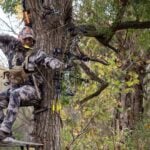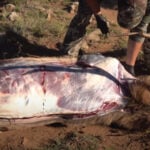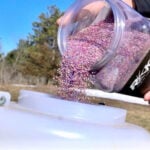One thing deer require is a diverse habitat. If your hunting location or property is lacking water, you may want to consider putting in a small waterhole or pond. Providing a source of water where it is lacking can be a great way to attract and hold deer. I did this last year on my property and with several months of little to no rain, it became a deer magnet as little creeks and streams dried up.
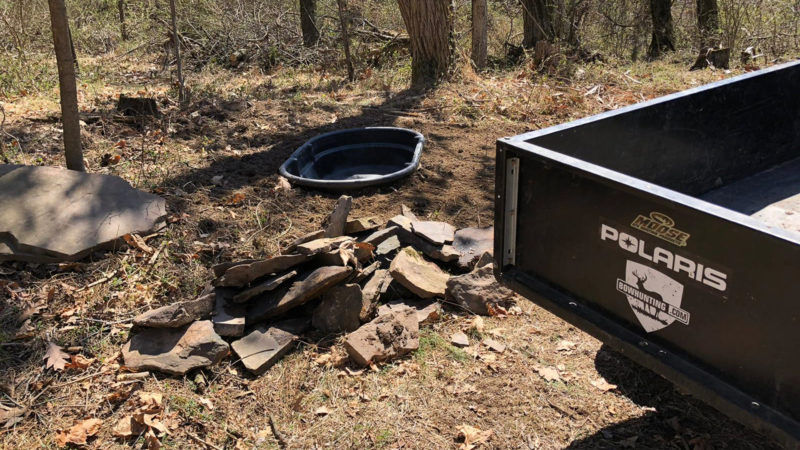
Location
Consider these points when choosing a location for your waterhole. If deer already have access to a reliable water source, you may not see the maximum benefits that a waterhole can provide.
I chose to put my waterhole on top of a little ridge where access to water is limited. The little streams nearby usually dry up in summer.
I also chose a location that I could easily access, because in times of dry weather conditions I might have to add some water, if rainwater is not naturally filling it back up. I did this several times last summer during our drought-like conditions in central Pennsylvania.
My waterhole was within bow range of one of my stands. The deer were coming from their bedding area, hitting the waterhole, then on to my small oat food plot. I passed on quite a few deer at the waterhole.
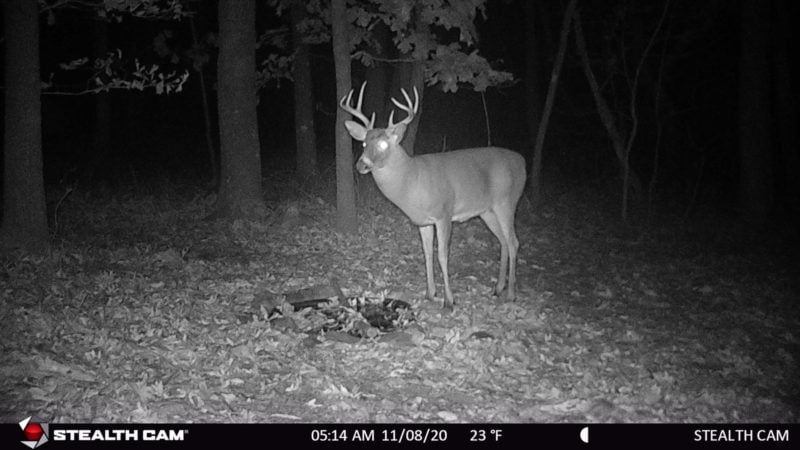
Most of all, I enjoyed watching the deer meet a basic need that I helped provide for them. Keep in mind, the more sun your waterhole receives, the more algae will build up.
This isn’t necessarily a bad thing, unless it gets too thick. This will also increase the rate of evaporation. My waterhole was located on the edge of a thicket where deer felt secure approaching for a drink.
Preformed Water Trough
I had a 50-gallon Rubbermaid water trough laying around and decided to use that. Anything able to hold water will work. You can purchase these at any farm store for between $50 – $80.
Price varies depending upon gallon size. The thicker the material, the better for added durability and protection. I traced an outline around my trough and loosened the dirt with my tractor. The soft springtime soil made easy digging, and I quickly had the trough in the ground.
Make sure you use a level to get the trough nice and squared up in the ground. This will maximize the amount of water you can hold.
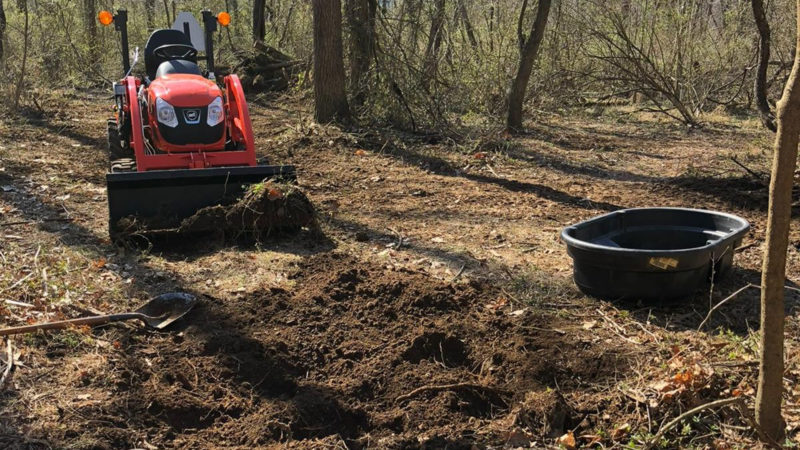
Others have opted to simply set the trough on top of the ground. I used some stone around the edge to give it a more natural look. This had no unwanted effect on the deer using it. Fawns, to mature bucks, easily drank from the trough.
When it was time for water, I transferred it in large fish food buckets with lids from my house to the waterhole site. Lids are essential as there would have been a lot of water spilled on the way to the trough. A bigger pond would probably require a bigger water tank transfer system.
Pond Liner Option
If you want a bigger waterhole, a rubber pond liner is the way to go. This method will likely be a little more costly because some excavating will need to be done. Pond liners and felt can be purchased online at stores like justpondliners.com.
Obviously, the bigger you go the more expensive the liner. Take into consideration how deep you want to make the waterhole. Once a good location is established, a bowl-shaped area will need to be cleared.
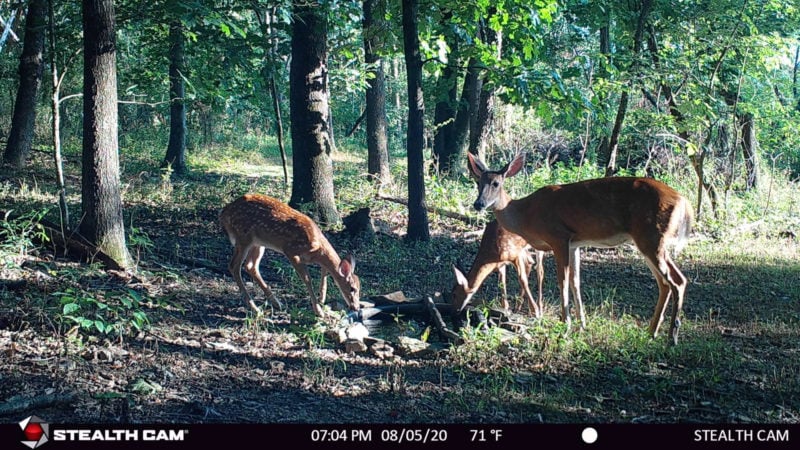
Old carpet or a felt liner will need to be put down before rubber is put directly on the soil. This prevents any unwanted punctures as the weight of the water will push down on the liner and into the soil which may contain sharp rocks.
Covering the liner with soil will help pack it in and allow wildlife the ability to walk into the waterhole, which the deer love to do. Without soil, the liner becomes very slippery. If you are in an area with bears, one slip and swipe of a bear paw could leave your waterhole with a permanent leak.
Maintenance
Occasionally, you may have to add some water to the trough or pond if natural rainwater is not filling it back up. Evaporation and wildlife usage can drop water levels quickly.
Also, I’ll occasionally take a little net and scoop out unwanted leaves, twigs, dead caterpillars, and anything else that may leave the waterhole stagnate. The little net works well with clearing algae build up as well.
Keeping a stick or small log running across and in contact with the water prevents unwanted problems. Small rodents and animals are also attracted to the water, and if they get stuck without a way out, they can die, contaminating the water source.
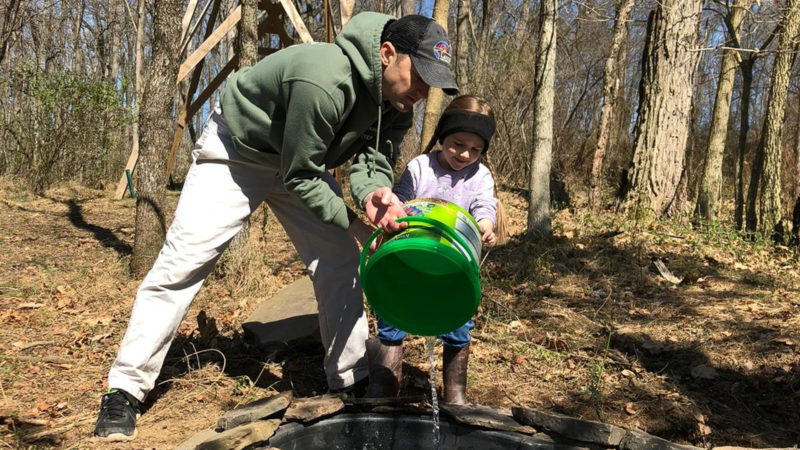
Controlling Mosquitoes
Unfortunately, putting in a waterhole means creating the perfect breeding ground for pesky mosquitoes. Mosquitoes are vectors for unwanted diseases, such as West Nile virus.
Nothing ruins an early season hunt like swatting at annoying mosquitoes. Fortunately, there is an easy fix. Mosquito Dunks treat 100 square feet of water surface and last about 30 days.
They use a bacteria only toxic to mosquito larva and non-toxic to all other wildlife. Every month I would toss one in, and I never saw any of the squirmy larva.
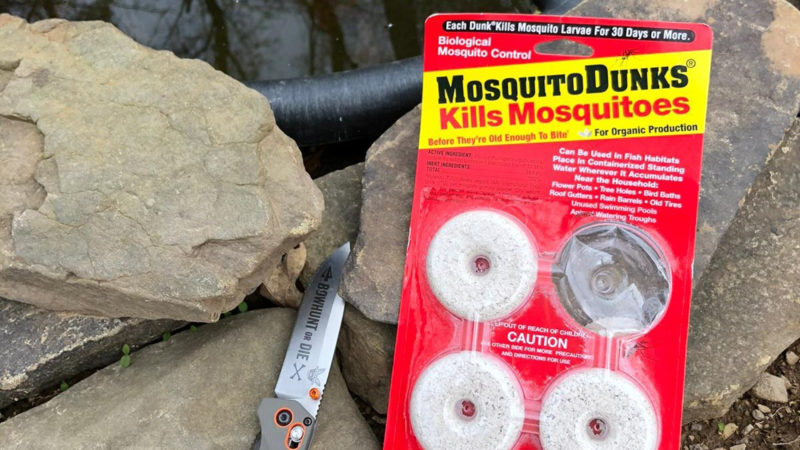
Conclusion
I had a lot of fun putting in my waterhole with the help of my daughter last spring. Little did I know the benefit it would have in the coming dry months. Trail camera pictures and visual sightings convinced me that the water source was part of the deers’ daily routine.
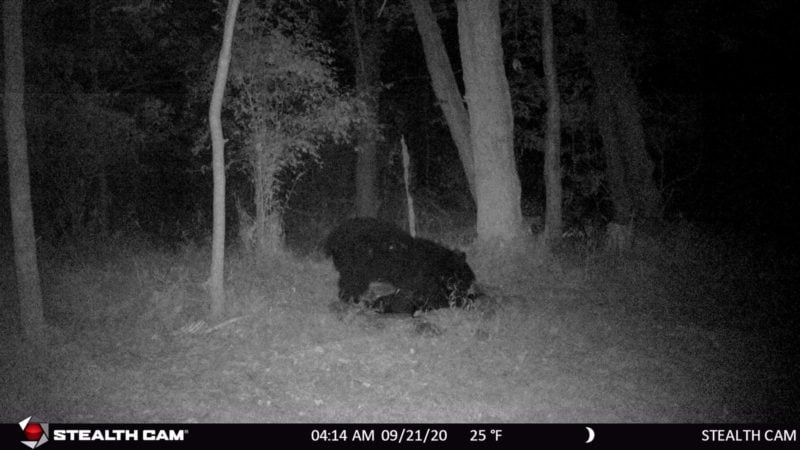
Not only did it draw deer, it was a benefit to a variety of other wildlife as well. I got pictures of bear, birds, squirrels, rabbits, fox, and butterflies at the waterhole. With little cost to me, and some sweat equity, I was able to add another unique feature benefitting deer and wildlife to my property.

 By
By 